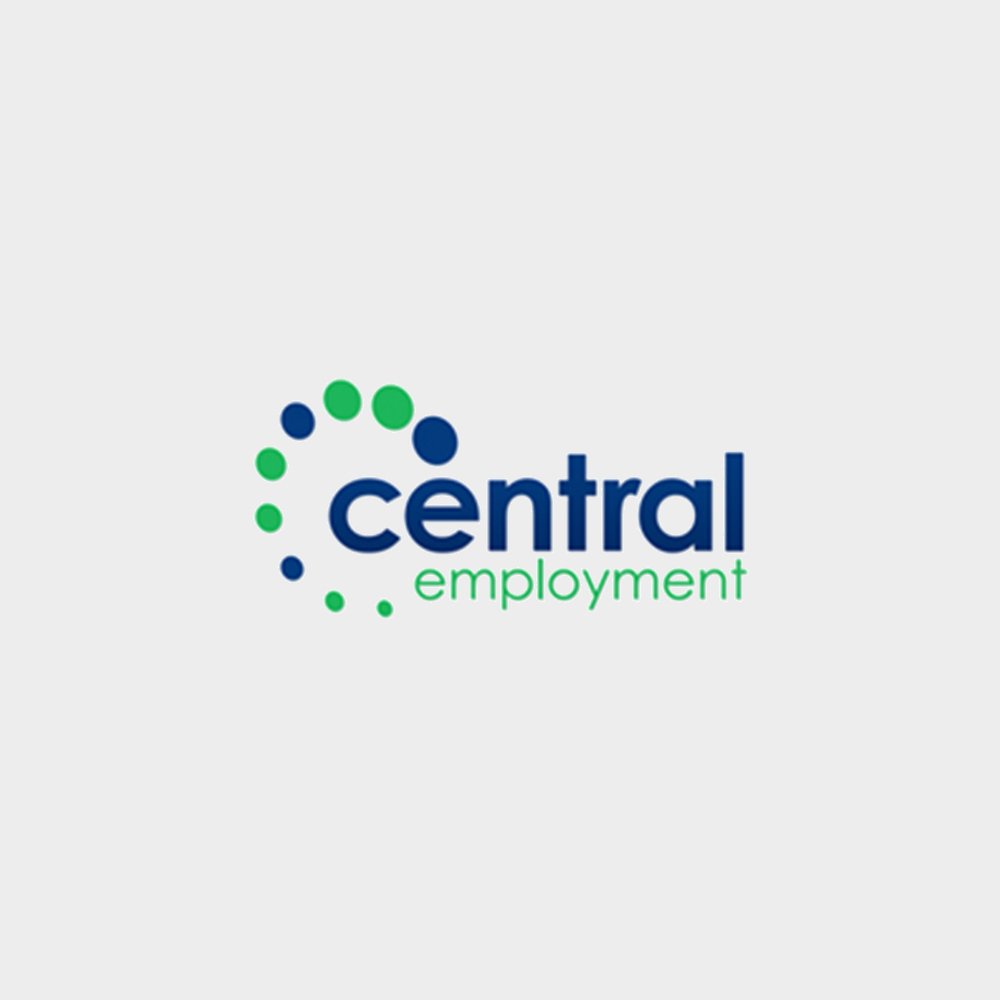
Check if your employer can use the Coronavirus Job Retention Scheme
If you and your employer both agree, your employer might be able to keep you on the payroll if they’re unable to operate or have no work for you to do because of coronavirus (COVID-19). This is known as being ‘on furlough’.
Your employer could pay 80% of your regular wages through the Coronavirus Job Retention Scheme, up to a monthly cap of £2,500.
You’ll still be paid by your employer and pay taxes from your income. You cannot undertake work for your employer while on furlough. We expect the scheme to be up and running by the end of April.
Check if you’re eligible
Your employer is responsible for claiming through the Job Retention Scheme on your behalf and for paying you what you are entitled to. You cannot apply for the scheme yourself.
Both you and your employer must agree to put you on furlough – so speak to your employer about whether they can claim. Once agreed your employer must confirm in writing that you have been furloughed to be eligible to claim. Contact your employer if you do not receive confirmation.
If you are concerned that your employer has claimed on your behalf but is not paying you what you are entitled to as described in this guidance you should raise this with your employer in the first instance, then with the Advisory, Conciliation and Arbitration Service (ACAS).
Any employer with a UK payroll and a UK bank account will be able to claim, but you must have been on your employer’s PAYE payroll before or on 28 February 2020. You can be on any type of contract, including a zero-hour contract or a temporary contract. You can be furloughed under the scheme if you are a foreign national.
This scheme does not apply if you are self-employed or to any income from self-employment. You may qualify for support under the Self-employment income support scheme.
If you’re on sick leave or self-isolating because of coronavirus (COVID-19), speak to your employer about whether you’re eligible to be furloughed – you should get Statutory Sick Pay (SSP) as a minimum while you are on sick leave or self isolating. Your employer can furlough you at any time- if they do, you will no longer receive sick pay, but should be treated as any other furloughed employee.
If you are shielding in line with public health guidance or required to stay home due to an individual in your household shielding and are unable to work from home, then you should speak to your employer about whether they plan to place staff on furlough.
If you are unable to work, including from home, due to caring responsibilities arising from coronarivus (COVID-19), such as caring for children who are at home as a result of school and childcare facilities closing, or caring for a vulnerable individual in your household, then you should speak to your employer about whether they plan to place staff on furlough. The grant will start on the day you were placed on furlough and this can be backdated to 1 March 2020.
If you were made redundant or stopped working for your employer after 28 February 2020
Your employer can agree to re-employ you and place you on furlough. They’ll still be able to claim a grant to cover 80% of your regular wages, up to a monthly cap of £2,500 if you were on your employer’s PAYE payroll on 28 February 2020.
If you currently have more than one employer
You can be put on furlough by one employer and continue to work for another. If you’re put on furlough by more than one employer, you’ll receive separate payments from each employer. The 80% of your regular wage up to a £2,500 monthly cap applies to each job.
If you have had multiple employers over the past year, have only worked for one of them at any one time, and are being furloughed by your current employer, you cannot be furloughed by your previous employer.
If you are on Universal Credit
If you’re earning less because you’re on furlough, your Universal Credit payment might change – find out how earnings affect your payments.
If you are on maternity leave, adoption leave, paternity leave or shared parental leave
The normal rules for maternity and other forms of parental leave and pay apply.
Your employer can claim through the scheme for enhanced (earnings related) contractual pay for employees who qualify for either:
- maternity pay
- adoption pay
- paternity pay
- shared parental pay
If you are pregnant and about to start maternity leave
You should start maternity leave as normal. If your earnings have reduced because you were put on furlough or off sick before your maternity leave started, this may affect your Statutory Maternity Pay. The same rules apply to adoption pay, paternity pay and shared parental pay.
If you’re employed by an individual
If you’re employed by an individual (for example, as a nanny) then your employer can furlough you under the scheme if you are paid through PAYE and were on their payroll on or before 28 February 2020.
If you’re on a fixed term contract
Your employer can choose to furlough you and claim a grant for 80% of your regular wages up to a cap of £2500 a month. Your employer can choose to renew or extend your contract during the furlough period.
If you’re an apprentice
Apprentices can be furloughed in the same way as other employees and continue to train.
You must be paid at least the Apprenticeship Minimum Wage/National Living Wage/National Minimum Wage as appropriate for all of the time you spend training, even if this is more than 80% of your normal wages.
If you’re a public sector employee
The government expects that the scheme will not be used by many public sector organisations, as the majority of public sector employees are continuing to provide essential public services or contribute to the response to the coronavirus outbreak.
Where employers receive public funding for staff costs, and that funding is continuing, we expect employers to use that money to continue to pay staff in the usual fashion – and correspondingly not furlough them.
This also applies to non-public sector employers who receive public funding for staff costs. Organisations who are receiving public funding specifically to provide services necessary to respond to COVID-19 are not expected to furlough staff.
In a small number of cases, for example where organisations are not primarily funded by the government and whose staff cannot be redeployed to assist with the coronavirus response, the scheme may be appropriate for some staff.
If you work for the public sector, you can get more information about how the scheme works for you from your UK Government Department, employer or, in the case of employers funded by the Scottish Government, Welsh Government or Northern Ireland Executive, through your respective administration.
Other specific categories
You may be eligible to be furloughed, and receive a grant of 80% of your regular wages up to a monthly cap of £2500, if you are paid via PAYE and are in one of the following categories.
- You are an agency worker
- You are a company director
- You are a contractor with public sector engagements in scope of IR35 off-payroll working rules (IR35)
- You are a salaried member of a Limited Liability Partnership
- You are a Limb (b) worker
- You are an office holder
Detail on how this scheme can apply to you is set out at the end of this guidance.
How much you’ll get
Your employer will get a grant to cover 80% of your regular wages, up to a maximum of £2,500.
Firms will be eligible for the grant from the date you ceased work, from 1 March. Your employer:
- will pay you at least 80% of your regular monthly wages, up to a maximum of £2,500, as your wage
- can claim for a minimum of 3 consecutive weeks and for up to 3 months – but this may be extended
- can choose to pay you more than the grant – but they do not have to
- cannot choose to pay you less than the grant
- You’ll still pay Income Tax, National Insurance contributions, Student Loan repayments and any other deductions (such as pension contributions) from your wage.
How your monthly wages are calculated
If you are a full-time or part-time employee on a salary, then your monthly wages are based on your salary as at 28 February 2020.
If your pay varies and you’ve been employed (or engaged by an employment business in the case of agency workers) for a full year, employers will claim for the higher of either:
- the amount you earned in the same month last year
- an average of your monthly earnings from the last year
If your pay varies and you’ve been employed for less than a year, employers will claim for an average of your regular monthly wages since you started work.
If you started work in February 2020, your employer will pro-rata your earnings from that month.
The grant paid to your employer will be calculated based on your regular, contractual pay, such as wages, compulsory commission and past overtime. The calculation will not include discretionary commission (including tips) payments or bonuses, non-cash payments or benefits in kind.
HMRC agrees that COVID-19 counts as a life event that could warrant changes to salary sacrifice arrangements, if the relevant employment contract is updated accordingly. If you want to switch out of a salary sacrifice scheme as a result of COVID-19, you should speak to your employer.
Returning from statutory leave
Statutory leave includes maternity leave, paternity leave, shared parental leave, adoption leave, sick leave and parental bereavement leave.
In line with other employees, if you are a full or part time employee returning from statutory leave after 28 February 2020 your employer should calculate the grant against your salary, before tax, not the pay you received whilst on statutory leave.
If your pay varies, and you are furloughed on your return from statutory leave your employer should calculate the grant using either the:
- same month’s earning from the previous year
- average monthly earnings for the 2019-2020 tax year.
While you’re on furlough
Once you are on furlough you will not be able to work for your employer. You can undertake training or volunteer subject to public health guidance, as long as you’re not:
- making money for your employer or a company linked or associated to your employer
- providing services to your employer or a company linked or associated to your employer
If workers are required to, for example, complete training courses whilst they are furloughed, then they must be paid at least their appropriate minimum wage (NLW/NMW/AMW) for the time spent training, even if this is more than the 80% of their wage that will be subsidised.
Whilst furloughed your employer cannot ask you to do work for another linked or associated company.
If your contract allows, you may undertake other employment while your current employer has placed you on furlough, and this will not affect the grant that they can claim under the scheme. You will need to be able to return to work for the employer that has placed you on furlough if they decide to stop furloughing you, and you must be able to undertake any training they require while on furlough. If you take on new employment, you should ensure you complete the starter checklist form with your new employer correctly. If you are furloughed from another employment, you should complete Statement C. Any activities undertaken while on furlough must be in line with the latest Public Health guidance during the COVID-19 outbreak.
Your employer can still make you redundant while you’re on furlough or afterwards.
Your rights as an employee are not affected by being on furlough, including redundancy rights.
If your employer chooses to place you on furlough, you will need to remain on furlough for a minimum of 3 consecutive weeks. However, your employer can place you on furlough more than once, and one period can follow straight after an existing furlough period, while the scheme is open. The scheme will be open for at least 3 months.
If you do not want to go on furlough
If your employer asks you to go on furlough and you refuse you may be at risk of redundancy or termination of employment, depending on the circumstances of your employer. However, this must be in line with normal redundancy rules and protections.
Guidance for specific customers
If you’re an agency worker (including if you are employed by an umbrella company)
Where agency workers are paid through PAYE, they are eligible to be furloughed and receive support through this scheme, including where they are employed by umbrella companies.
Furlough should be agreed between the agency, as the deemed employer, and the worker. As with employees, agency workers should perform no work for, through, or on behalf of the agency that has furloughed them while they are furloughed, including for the agency’s clients.
Where an agency supplies clients with workers who are employed by an umbrella company that operates the PAYE, it will be for the umbrella company and the worker to agree whether to furlough the worker or not.
If you’re an office holder
If you are an office holder who is remunerated by PAYE then you can be furloughed and receive support through this scheme. The furlough, and any ongoing payment during furlough, will need to be agreed between you and the party who operates PAYE on the income they receive for holding their office. Where you are a company director or member of a Limited Liability Partnership (LLP), the furlough arrangements should be adopted formally as a decision of the company or LLP.
If you’re a company director
As office holders, salaried company directors are eligible to be furloughed and receive support through this scheme. Company directors owe duties to their company which are set out in the Companies Act 2006. Where a company (acting through its board of directors) considers that it is in compliance with the statutory duties of one or more of its individual salaried directors, the board can decide that such directors should be furloughed.
Where furloughed directors need to carry out particular duties to fulfil the statutory obligations they owe to their company, they may do so provided they do no more than would be judged reasonably necessary for the purposes, i.e. they should not do work of a kind they would carry out in normal circumstances to generate commercial revenue or provides services to or on behalf of their company.
This also applies to salaried individuals who are directors of their own personal service company (PSC).
If you’re a contractor with public sector engagements in scope of IR35 off-payroll working rules (IR35)
Public sector bodies will follow the Crown Commercial Services guidance in the vast majority of cases. In a small number of cases, for example where organisations are not primarily funded by the government and whose staff cannot be redeployed to assist with the coronavirus response, it may be appropriate to claim under the CJRS. Contractors who are deemed employees according to the off-payroll working rules can be eligible for this scheme.
In this scenario, if the public sector organisation wished to furlough a contractor, they would have to confirm this with both the contractor’s Personal Service Company (PSC) and the fee-payer (as set out in the off-payroll working rules, usually the agency paying the contractor’s PSC). It should be formally agreed between these parties that the contractor is to do no work for the public sector organisation during their period of furlough. The fee-payer would be able to apply for the furlough payment of 80% of the monthly contract value, up to a maximum of £2,500, as well as the employer NICs on that subsidised wage. The fee-payer would then pay at least the amount of wage-grant received to the PSC, and report the payment via PAYE using the contractor’s details, making the usual tax and National Insurance contributions (NICs) deductions for contracts in scope of the off-payroll rules. The PSC would then be required to report the amount it pays to the contractor as deemed employment income via PAYE using box 58A on the PAYE Real Time Information return.
Where a contractor is continuing to receive payments from a public sector client (including through the CJRS or other any other scheme), income from this client should be excluded from any calculation of the reference pay for the purposes of the CJRS if the contractor also decides to furlough themselves as an employee or director of their own company.
If you’re a salaried member of a Limited Liability Partnership (LLP)
Members of LLPs who are designated as employees for tax purposes (‘salaried members’) under the Income Tax (Trading and Other Income) Act (ITTOIA) 2005 are eligible to be furloughed and receive support through this scheme.
The rights and duties of a member of an LLP are set out in an LLP agreement and in the absence of an agreement, default provisions in the LLP Act 2000, based upon company and partnership law. Such an agreement may include separate agreement between the LLP and an individual member setting out the terms applicable to that member’s relationship with the LLP.
To furlough a member, the terms of the LLP agreement (or any such agreement between the LLP and the member) may need to be varied by a formal decision of the LLP, for example to reflect the fact that the member will perform no work in the LLP for the period of furlough, and the effect of this on their remuneration from the LLP. For an LLP member who is treated as being employed by the LLP (in accordance with s863A of ITTOIA 2005), the reference salary for this scheme is the LLP member’s profit allocation, excluding any amounts which are determined by the LLP member’s performance, or the overall performance of the LLP.
If you’re a Limb (b) Worker
Where Limb (b) Workers are paid through PAYE, they can be furloughed and receive support through this scheme.
Those who pay tax on their trading profits through Income Tax Self-Assessment, may instead be eligible for the Self-Employed Income Support Scheme (SEISS), announced by the Chancellor on 26 March 2020.
More information about the SEISS, including the eligibility criteria and how to claim, is available here.
If you’re a contingent worker in the public sector
The Cabinet Office has issued guidance on how payments to suppliers of contingent workers impacted by COVID-19 should be dealt with where the party receiving the contingent worker’s services is a Central Government Department, an Executive Agency of a Central Government Department or a Non-Departmental Public Body.
This guidance applies to agency workers paid through PAYE, as well as those paid through umbrella companies on PAYE and off-payroll workers supplying their services through a Personal Service Company (PSC). This guidance can be read here
Source: https://www.gov.uk/guidance/check-if-you-could-be-covered-by-the-coronavirus-job-retention-scheme
Date Published: 20/04/2020





















